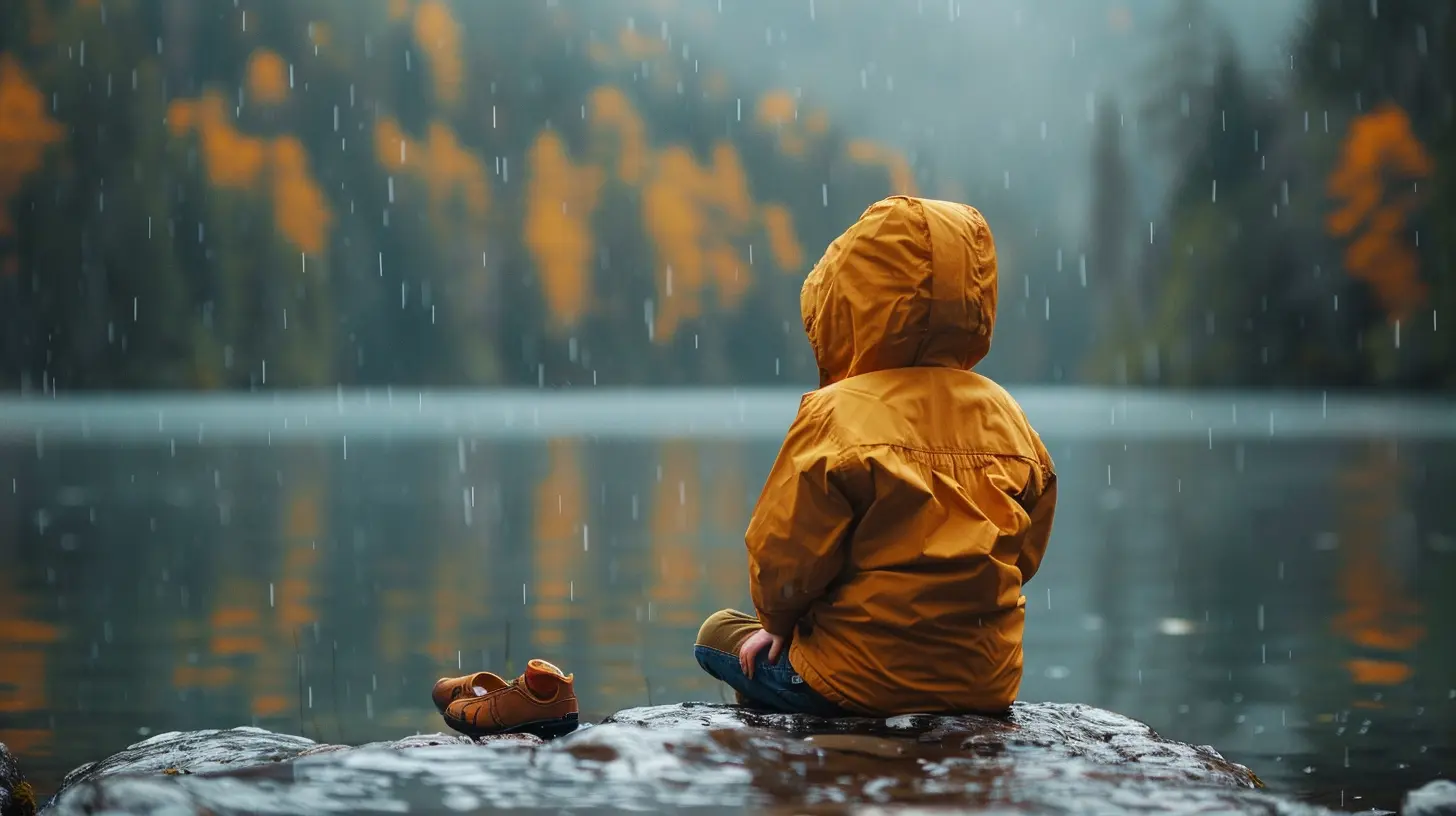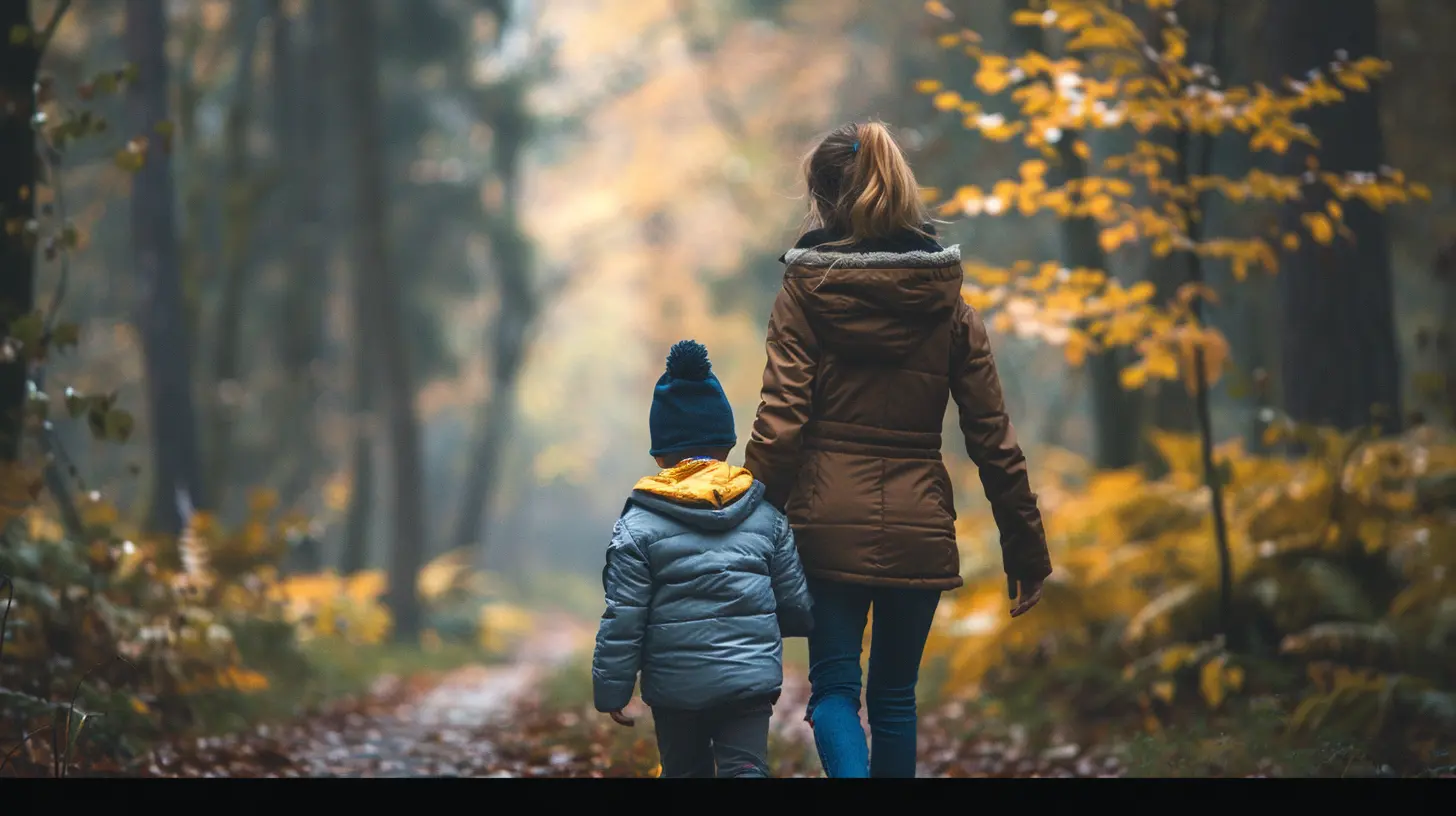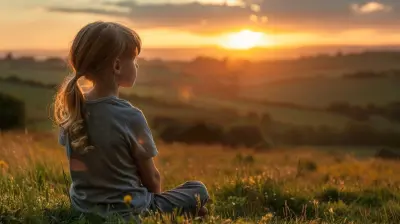Outdoor Mindfulness: Teaching Your Kids to Appreciate Nature
10 December 2024
In a world full of screens, constant notifications, and endless to-do lists, kids are growing up disconnected from something really important — nature. Do you remember your younger years, playing outside until the streetlights flickered on? I bet you can still feel the crunch of leaves under your shoes or the warmth of the sun on your face. Those moments might seem simpler now, but they were packed with life lessons and mindfulness that we didn’t even realize we were absorbing.
Mindfulness, at its core, is about being present. It’s about slowing down and noticing the world around us, and there’s no better place to do that than outside. If you’re like most parents today, you probably worry about how much time your kids spend indoors and glued to electronic devices.
But here's the good news – you can teach your kids to appreciate nature and instill a sense of mindfulness in the process. Not sure where to start? Don’t worry, I’ve got you covered. Let’s dive into how you can introduce your little ones to the magic of the great outdoors while cultivating a mindful mindset.

Why Is Outdoor Mindfulness Important?
Before we jump into the how, let’s talk about why outdoor mindfulness is so essential for your kids. Kids today face a world that's a lot busier, faster, and at times, more stressful than what we experienced growing up. Studies have shown that exposure to nature helps reduce stress, lower anxiety, and improve emotional regulation.And honestly, who doesn’t need a break from the hustle?
Outdoor mindfulness teaches your child to slow down, observe, and appreciate their surroundings. This process helps them develop a deeper connection with the natural world, benefiting their physical, mental, and emotional well-being. It’s about more than just fresh air — it's about fostering curiosity, creativity, and calmness.

The Benefits of Outdoor Mindfulness for Kids
1. Reducing Stress and Anxiety
Nature has a calming effect. From the sound of birds chirping to the gentle rustle of leaves in the wind, nature encourages kids to relax. Mindfulness combined with outdoor activities helps children regulate their emotions, making it a perfect antidote to the stress and anxiety that can come from school, social life, or simply being overstimulated by technology.2. Promoting Physical Health
When kids are outside, they're moving. Whether they’re running, climbing trees, or just walking through a park, spending time outdoors encourages physical activity. This boosts their cardiovascular health, builds strength, and improves coordination — and it’s certainly more engaging than gym class!3. Boosting Creativity and Problem-Solving
There’s nothing like nature to spark a child’s imagination. From pretending that sticks are swords to building fairy houses with leaves and pebbles, being in nature encourages creative play. It also helps them solve problems, like figuring out how to climb that big rock or navigate a tricky trail.4. Instilling Environmental Stewardship
Mindfulness in nature fosters a sense of appreciation for the earth. Teaching your kids to be mindful outside means they’ll learn to respect and care for the environment. They’ll begin to understand that their actions have an impact on the world, creating future stewards of the planet.5. Enhancing Focus and Concentration
Spending time in green spaces has been shown to improve a child’s concentration and focus. Studies indicate that kids who spend time outdoors are better able to concentrate when they return to structured activities, such as homework or schoolwork.6. Building Emotional Resilience
Being outside encourages kids to face new challenges — whether it’s getting past the fear of holding a bug or navigating a slippery rock. Over time, these experiences build emotional resilience and confidence, teaching them that they are capable of overcoming obstacles.
Creating Mindfulness With Simple Outdoor Activities
So now that we've covered the "why," let’s get into the "how." You don’t need to live next to a national park or plan an elaborate hiking trip to teach your kids outdoor mindfulness. Here are some activities you can try in any green space, even if it's your backyard or a local park.1. Mindful Walks
Start with something simple: a mindful walk. It's more than just a stroll — it's about walking slowly and intentionally, paying close attention to your surroundings. Ask your kids to notice things like the sound of their footsteps, the different textures under their feet, and the variety of colors they see. Encourage them to take deep breaths and soak in the scents of nature around them. Who knows, they might even spot something cool like a butterfly or a unique-looking plant!2. Nature Scavenger Hunt
Turn a regular walk into an adventure by creating a nature scavenger hunt. Make a list of things your child has to find — a pine cone, a yellow flower, a smooth rock, etc. But don’t rush it. Teach them to approach each item with curiosity, examining shapes, textures, and smells. It’s not just about checking items off the list, it’s about engaging deeply and mindfully with each find.3. Cloud Watching
Remember lying on the grass as a kid, watching clouds drift by and imagining they were animals or other fantastical shapes? Well, it's time to introduce this simple yet profound activity to your kids. Encourage them to focus on their breathing and let their imaginations run wild as they describe the clouds. This helps promote mindfulness, while also sparking that all-important creative play.4. Create a Nature Journal
Here’s a fun way to extend outdoor mindfulness beyond the outdoors: Introduce your kids to a nature journal. After spending time outside, encourage them to write down or draw what they saw, heard, or smelled. Have them press leaves or flowers between the pages or tape in a feather they found. This helps them process their experience and remember the details of what they observed. As they build up their journal over time, they’ll have a personal record of their outdoor mindfulness journey.5. Tree Hugging (Yes, Really!)
It might sound a little out there, but tree hugging isn't just a quirky phrase — it's an actual mindful practice. Ask your kids to stand by a tree and close their eyes. Have them slowly reach out, touch the tree, and feel its roughness or smoothness. Encourage them to think about how long the tree has been standing there and how it's become a home for various creatures like birds and squirrels. Not only is this a grounding practice, but it’s also a great conversation starter about the ecosystem.6. Meditation in Nature
Mindfulness and meditation go hand in hand, and nature provides the perfect space to introduce your child to meditation. Start simple with short, 1-2 minute guided meditations focusing on breathing. Ask them to sit still and listen to the sounds around them — birds chirping, the wind rustling the leaves, or even the distant hum of cars. This practice helps kids build self-awareness while providing a quiet space for inner calm.7. Build a Fairy Garden or Insect Habitats
If you’ve got a small plot of land or even a potted plant, you can create a magical fairy garden or insect habitat with your kids. Let them use their imagination to arrange small stones, flowers, and twigs to create a mini-home for fairies or bugs. This activity encourages both mindfulness and creativity while giving your child a tactile sense of connection to the earth. It also teaches them patience, as they’ll have to observe their creation grow and change over time.
Tips for Encouraging Consistent Outdoor Mindfulness
1. Make It Fun, Not a Chore
Mindfulness shouldn’t feel like another item on their to-do list. Instead of commanding your kids to “be mindful,” introduce it through play and natural curiosity. Make it a regular part of your family time, something they look forward to rather than something they have to do.2. Lead by Example
If your kids see you scrolling through your phone on a park bench while they play, they’re not going to be inspired to be mindful. Show them by example. Take the time to be present, to notice the little things, and to appreciate the beauty around you. Your calmness and attention will rub off on them.3. Keep It Short and Sweet
Younger kids often have short attention spans. Don’t expect them to sit for a 20-minute meditation or stay engaged in a nature journal for hours. Start small. Even five minutes of mindful walking or two minutes of cloud watching can have a big impact. Gradually increase the time as they become more comfortable with the practices.4. Encourage Reflection
Once the outdoor adventure is over, take a moment to reflect with your kids. Ask them what they noticed, how they felt, or if anything surprised them. These simple questions help reinforce a mindful perspective and allow them to process their experiences more deeply.Conclusion: Nurture a Lifelong Connection With Nature
Teaching your kids outdoor mindfulness isn’t about making them expert meditators or eco-activists overnight. It's about giving them the tools to slow down, appreciate the natural world, and build a lifelong connection with the environment. In a world that often moves too fast, taking the time to embrace outdoor mindfulness is an invaluable gift you can give them.So next time the weather’s nice, step outside with your kids. Let them throw off their shoes, breathe in the fresh air, and feel the grass between their toes. Those small moments might just turn into memories they’ll carry with them forever.
all images in this post were generated using AI tools
Category:
Outdoor ActivitiesAuthor:

Zelda Gill
Discussion
rate this article
14 comments
Barbara Hunter
Teaching children to appreciate nature fosters mindfulness and enhances their well-being. Engaging them in outdoor activities encourages curiosity, reduces stress, and strengthens their connection to the environment. Simple practices like nature walks or observing wildlife can cultivate gratitude and awareness in their daily lives.
February 6, 2025 at 3:39 AM

Zelda Gill
Thank you for your insightful comment! I completely agree that engaging children with nature not only promotes mindfulness but also nurtures their overall well-being. Simple outdoor activities can truly make a lasting impact.
Carla McPhee
This article beautifully highlights the importance of cultivating a connection with nature in children. However, it could expand on practical strategies for parents to integrate outdoor mindfulness into daily routines, ensuring lasting appreciation and engagement.
January 30, 2025 at 4:42 PM

Zelda Gill
Thank you for your feedback! I appreciate your suggestion and will consider adding practical strategies for parents to integrate outdoor mindfulness in future articles.
Kai McVicker
Great tips! Engaging kids in nature fosters mindfulness and builds lasting appreciation for the environment.
January 26, 2025 at 3:21 PM

Zelda Gill
Thank you! I'm glad you found the tips helpful. Engaging with nature truly enriches children's mindfulness and appreciation for our environment.
Kate Hines
This is a wonderful reminder to nurture children's connection with nature. Mindfulness truly enriches their outdoor experiences!
January 22, 2025 at 5:31 PM

Zelda Gill
Thank you! I'm glad you found it inspiring. Nurturing that connection is so important for their growth and well-being!
Amy Underwood
Nature nurtures wonder—let's inspire our kids to explore!
January 19, 2025 at 3:22 PM

Zelda Gill
Absolutely! Inspiring exploration in nature fosters mindfulness and deepens our children's appreciation for the world around them. Let's encourage their curiosity!
Deborah Clayton
Embracing outdoor mindfulness nurtures children's connection to nature, fostering gratitude and awareness. It's a powerful way to enhance their emotional well-being and environmental stewardship.
January 14, 2025 at 4:40 PM

Zelda Gill
Thank you for highlighting the importance of outdoor mindfulness! It truly cultivates a deeper connection with nature and promotes emotional well-being in children.
Ella Lambert
Encouraging outdoor mindfulness helps kids connect with nature, boosts mental health, and fosters curiosity. Simple activities can make a difference!
January 8, 2025 at 5:43 PM

Zelda Gill
Absolutely! Outdoor mindfulness cultivates a deep appreciation for nature while enhancing mental well-being and sparking curiosity in kids. Simple activities truly make a big impact!
Elizabeth Diaz
Great tips! Engaging kids in nature fosters mindfulness and strengthens their connection to the environment.
January 5, 2025 at 4:55 AM

Zelda Gill
Thank you! I’m glad you found the tips valuable. Engaging kids with nature truly enriches their mindfulness and deepens their environmental connection.
Christopher McPhail
This article is a wonderful reminder of the importance of connecting with nature! I'm curious about practical activities that can engage kids in outdoor mindfulness. How can we make these experiences both fun and educational for children of different ages? Looking forward to exploring more!
January 2, 2025 at 5:04 PM

Zelda Gill
Thank you for your enthusiasm! Consider activities like nature scavenger hunts, guided sensory walks, or outdoor art projects that encourage observation. Tailor them to different ages by adjusting complexity—older kids might enjoy journaling their experiences, while younger ones can focus on simple, hands-on tasks. Happy exploring!
Quentin Warren
This article beautifully captures the importance of instilling a love for nature in children. Mindfulness in the outdoors is essential for their development!
December 25, 2024 at 4:51 PM

Zelda Gill
Thank you! I'm glad you found the article meaningful. Instilling a love for nature in children truly enriches their development.
Flora Wheeler
Great tips! Kids truly thrive when connected with nature's wonders.
December 17, 2024 at 4:42 PM

Zelda Gill
Thank you! I couldn't agree more—nature is essential for kids' growth and well-being!
Melody Beck
What a beautiful reminder of the importance of connecting with nature! Teaching our children mindfulness outdoors not only fosters appreciation for the environment but also nurtures their emotional well-being. Thank you for sharing these valuable insights!
December 14, 2024 at 3:56 PM

Zelda Gill
Thank you for your thoughtful comment! I wholeheartedly agree—connecting with nature is vital for our children's emotional and environmental well-being.
Rory Ortiz
This article beautifully highlights the importance of outdoor mindfulness, guiding parents to foster a deep appreciation for nature in their children—an invaluable life skill!
December 11, 2024 at 3:52 PM

Zelda Gill
Thank you for your kind words! I'm glad you found the article insightful for fostering a love of nature in children.
Lys Gibson
Thank you for this inspiring article! Teaching kids to appreciate nature not only nurtures their minds but also their souls.
December 10, 2024 at 5:05 AM

Zelda Gill
Thank you for your kind words! I'm glad you found the article inspiring—nurturing a love for nature in our kids is indeed essential for their growth.
MORE POSTS

Exploring Nature Trails with Young Children

Preparing Your Toddler for Their First Dentist Visit

Helping Kids Understand the Long-Term Effects of Bullying

How to Parent Like a Comedian (Timing is Everything!)

When Kids Face Failure: Teaching Emotional Resilience

Tips for Biking Adventures with the Whole Family

Encouraging Your Child to Take Healthy Risks

Creating an Encouraging Environment for Early Childhood Development

Toddler Art Projects That Ignite Imagination